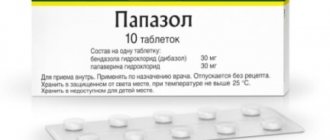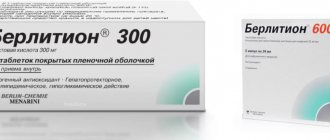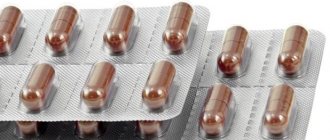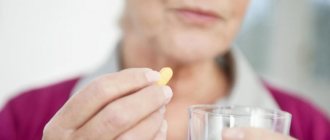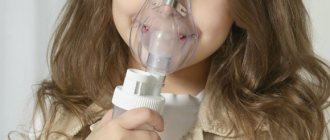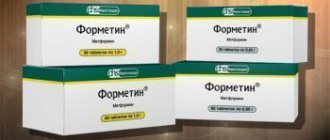Benefits and uses of leaves
The leaves and berries of the plant are used in folk medicine. An infusion of lingonberry leaves is used to achieve a diuretic, choleretic and disinfectant effect. Due to the presence of tannin compounds in the leaves, the product provides the body with anti-inflammatory and bactericidal effects.
Lingonberries contain catechins. They help strengthen capillaries and reduce their fragility. Due to its astringent and antiseptic properties, the leaves are used to make medicines for gastritis, gout and liver.
Lingonberry leaves contain many more useful elements for the human body:
- ascorbic acid;
- carotene;
- potassium and manganese salts;
- acetic, malic and citric organic acids.
To increase the overall immunity of the body, an infusion of lingonberry leaves is used.
Compound
- crushed lingonberry leaves - 1 tbsp. l.;
- water – 1 tbsp.
Preparation
- Pour the main ingredient with purified water.
- Boil for 5-7 minutes over low heat.
- Leave for 2 hours and strain.
Take 3-4 times a day before meals, 1 tbsp. l.
Useful properties of lingonberries
The fruits (berries) and leaves of lingonberries contain carotene and vitamin C, phytoncides, and tannins. In addition, lingonberries are rich in vitamins PP, E, B2, B1, B9. They contain sugars, catechins, mineral salts (copper, potassium, calcium, chromium and manganese, magnesium, phosphorus and iron), rhodioloside, fiber, pectin, organic acids (acetic, citric, malic, glyoxylic, formic, oxalic and benzoic) , antioxidant lycopene (providing prevention of malignant tumors).
Lingonberry leaves contain: arbutin (phenolic type glycoside, antiseptic), methylarbutin, acetylarbutin, flavonoids, lycopene, salidroside, hyperoside, organic acids (tartaric, ursolic, gallic, quinic and ellagic). Lingonberry seeds contain up to 30% fatty oil, in which glycerides of linolenic and linoleic acids are found. Calorie content 100 gr. Lingonberries are 46 kcal.
Benefits of berries
Lingonberries are a storehouse of useful ingredients and a tasty treat. It has low calorie content - 100 g of product contains 43 kcal. It contains benzoic acid, which is transformed into ascorbic acid. It contains fewer useful components compared to leaves, but this does not make it less expensive.
A complex of beneficial properties, namely: bactericidal, antipyretic, wound healing and others, helps to raise the general tone and normalize the state of the nervous system, protects blood vessels and capillaries from vulnerability, improves the functioning of the cardiovascular system and metabolism. Berry juice has a sedative, blood pressure-lowering effect . It also stimulates intestinal motility. All this is thanks to the sugars, organic acids and vitamins contained in lingonberry berries. Lingonberry fruits are used to make medicine to improve eyesight and treat hypertension. If you add natural honey to the infusion of lingonberries, the remedy will help get rid of cough with bloody discharge and fight tuberculosis.
Lingonberries help increase the secretion of saliva, gastric and pancreatic juices, and improve the absorption of food. Thanks to the plant-based medicine, you can relieve the unpleasant symptoms of gastritis with low acidity and inflammation of the pancreas.
The healing properties of lingonberry leaves
To summarize, we can conclude that lingonberry leaves have a gentle effect on the body, but at the same time effectively help fight many inflammatory and infectious diseases. This plant can be used to:
- strengthen the body;
- replenish the supply of vitamins;
- eliminate inflammation;
- reduce pain syndrome;
- fight infection;
- relieve swelling.
Like any medicinal plant, lingonberry leaves have contraindications for use: ulcers and gastritis with high acidity, low blood pressure.
Before using this raw material, you should definitely consult your doctor to get accurate recommendations regarding the dosage and duration of use. Tincture Decoctions and infusions Tea Traditional medicine Lingonberries Traditional medicine recipes
Diuretic infusion based on lingonberries
An infusion with a diuretic effect is recommended to be taken for liver and kidney diseases, constipation, gastritis and colitis.
Compound
- lingonberry fruits – 200 g;
- water – 400 ml.
Preparation
- Boil water and cool.
- Pour over the berries.
- Leave for 6-7 hours.
Take 100 ml 4 times a day before meals.
Traditional medicine recipes with lingonberries
Infusion of lingonberry leaves: 2 tables. l. 2 cups of leaves are steamed. boiling water, leave for 1 hour, filter. For gout and articular rheumatism, drink ½ tbsp. 3-4 r. per day. For cholelithiasis, take 2 tables. l. 4-5 r. per day. For cystitis and nephritis - ½ cup. min. 30 before meals twice a day. For periodontal disease and stomatitis, rinse your mouth with the infusion every 2-3 hours. For leukemia, drink ½ tbsp. 3 r. per day, at the same time they are treated with other herbs: strawberry and blueberry leaves, buckwheat flowers, lungwort juice or herb, tincture of cinquefoil roots).
Infusion of lingonberry leaves to improve digestion and normalize stool: 1 teaspoon. steam a spoonful of leaves 1 tbsp. boiling water and leave for min. 30. Drink 1/3 tbsp three times a day. on an empty stomach in the morning, before lunch and in the evening.
Infusion of lingonberry leaves for bedwetting (enuresis), diseases of the kidneys, liver, bladder, diarrhea, gout, rheumatism: 20 g. pour 200 ml of leaves. boiling water, leave for 1 hour, filter. Drink 1-2 tables before meals. l. 3-4 r. per day.
Infusion of lingonberry twigs and leaves: 1 tablespoon of chopped lingonberry shoots and leaves pour 1 tbsp. boiling water, infuse for min. 30, filtered. They accept 2 tables. lie 4-5 r. per day for colds and flu.
Lingonberry infusion for cirrhosis and hepatitis: mix the whole plant (along with the root) with St. John's wort 1:1. 1 tables. l. pour 1 cup of composition. boiling water Drink the infusion, dividing into equal portions, in 3 doses per day.
Infusion of lingonberries for liver or kidney diseases, constipation, colitis, gastritis: for infusion take 200 grams. berries, scald them with boiling water, add 400 ml. boiled water (cold) and leave for 6 hours. Take 100 ml before meals. 4 rub. in a day.
Decoction of lingonberry leaves: 10 gr. lingonberry leaves pour 1 cup. water, boil for min. 10, drink for cystitis, gout, pyelonephritis, kidney stones, rheumatism, 1 tbsp. 2 r. in a day. They drink it 1 tbsp. 3 r. per day for cholelithiasis, diseases of the genitourinary system, liver, as well as for diabetes, cough, gastritis with low acidity, hypertension, colds, colitis.
And if you simmer this decoction for 30 minutes. in a steam bath, after cooling, strain and add water to the initial volume, you will get an excellent remedy for stomatitis, gum inflammation and periodontal disease. It is recommended to rinse your mouth with the broth every 2 hours. A decoction of lingonberry leaves is given as a diuretic before meals: preschoolers - 1 dessert. l. 3 r. per day, schoolchildren - 1 tbsp. l. 3-4 r. per day. For cystitis or for its prevention during prolonged cold weather, take ½ tbsp of this decoction. 2-3 r. per day. Relief occurs within 3-4 days, but to prevent cystitis from becoming chronic, treatment must be continued for at least 2-3 weeks, and then undergo follow-up tests. For arthritis, gout or edema, the broth should be drunk in small sips a day, and a new portion should be prepared the next day.
A decoction of lingonberry leaves for leukemia: take 20 grams. lingonberry leaves, pour 200 ml. boiling water, min. 5 boil, infuse, filter. Drink ½ tbsp. 3 r. in a day.
A decoction of lingonberry leaves for stomach cancer (in combination with other remedies) and to improve metabolism: 1 table. l. lingonberry leaves, pour in 2 cups of hot water, heat in a water bath for min. 15, 45 min. cool, strain and add water, bringing to the initial volume. Drink ¼ tbsp. 3-4 r. in a day.
A decoction of lingonberry leaves for gastrointestinal diseases and diarrhea, uterine bleeding, urolithiasis, colds, and also as a gargle for sore throat, as a diuretic: take 2 tablespoons. lingonberry leaves, pour 250 ml. boiled water (cold) and 20-30 min. heat in a steam bath. Let it brew, filter. Drink 1/3-½ tbsp. 2-3 r. in a day. Store the infusion in the refrigerator for 24 hours.
A decoction of lingonberry leaves with vodka for arthritis, polyarthritis, gout and osteochondrosis: up to 100 gr. 2.5 liters of lingonberry leaves are poured. boiling water, leave for 2 hours, filter and add 1 tbsp to the broth. vodka. Simmer for 15 minutes. on fire, without letting it boil. 100 ml. drink within 30 minutes. before meals 3 r. per day 6 months for sand and stones in the bladder or kidneys, for rheumatism. For polyarthritis, take until sediment appears in the urine and movements become more free. Store in the refrigerator or cellar.
Lingonberry decoction: 50 gr. pour 400 ml of lingonberries collected during flowering. water, min. 20 boil, leave for 4-6 hours, filter. Drink 50 ml after meals. 3 r. per day for gout, hypertension, kidney disease, acute respiratory diseases, rheumatism, gastritis.
Decoction of lingonberries for radiation exposure, anemia, diabetes: boil 2 tablespoons of lingonberries for min. 10 in 2 cup. water, leave for 1 hour. After meals, drink 1 tbsp. 2 r. per day.
A decoction of lingonberries for dandruff, itchy scalp or hair loss: 2 tables. spoons of berries pour into 1 glass. water and boil for half an hour in a steam bath. Let cool, strain. After washing your hair, rinse your hair with warm broth.
Decoction of lingonberries with St. John's wort for bedwetting: 25 g. lingonberries, 50 gr. St. John's wort mix, add water (600 ml.), 10 minutes. boil, leave for 1 hour. Drink 200 ml. 3 r. per day from the 2nd half of the day, the last portion - before bed.
A decoction of berries and lingonberry leaves for enuresis in children. Berries and lingonberry leaves are taken equally. 2 tables. spoons of the mixture brew 2 cups. boiling water, boil over low heat for 10 minutes, cool and filter. Half of the decoction should be drunk several times a day, and the other half should be drunk before bed.
Vitamin tea from lingonberry leaves (for 5-6 servings): 2-3 tables. spoons of dried lingonberry leaves pour into 1 liter. boiling water, let it brew, add honey or sugar to taste. Drink tea cold or hot.
Vitamin tea from lingonberries with honey. 1 stack Mash the lingonberries, add 1 liter of water and 5 minutes. boil. Leave until it cools to warm, strain and add 150 grams. honey.
Lingonberry herb tincture for rheumatism. Young twigs and leaves of lingonberries are crushed and filled with 1/3 liters. jars, fill to the brim with alcohol (40%), infuse. Take 30 ml before meals. 2 r. in a day.
Tincture of lingonberries to prevent colds and strengthen the immune system. Mix 200 gr. lingonberry berries and 1 l. vodka, leave for two weeks, shaking the bottle from time to time. In case of hypothermia, to avoid getting sick, take 2 tablets. l. tinctures 2 r. in a day.
The collection is diuretic for cystitis. Mix 2 tables. l. lingonberry leaves, bearberry leaves, capitol herb, large plantain leaf, 1 table each. l. lavender grass, birch leaves, black currant leaves, ivy budra, common hop cones, common juniper fruits, Crimean rose petals, 3 table. l. stinging nettle herb, 6 tables each. l. shoots of horsetail and wild strawberry fruits. 1 tables. a spoonful of the mixture is brewed into 2.5 cups. boiling water, 30 min. infuse, filter. Take the collection warm before meals, 150 ml. 3 r. per day.
Medicinal collection for chronic pyelonephritis. Take 20 grams. lingonberry leaves, flax seeds, nettle herb; 10 gr. bearberry leaves, horsetail grass, juniper fruits, birch leaves, licorice root and dandelion. From 1 tables. spoons of a mixture of plants prepare an infusion in 200 ml of water, drink ½ tbsp. 3-4 r. in a day.
Collection for kidney stone disease. Mix equal parts of knotweed grass, lingonberry leaves, juniper fruits, horsetail grass, and gorse grass. 2 tablespoons Brew 2 cups of the mixture. boiling water; leave for an hour, filter. Drink 1 tbsp. in the morning and in the evening.
Collection for urinary and kidney stones. Mix 1 table at a time. l. herbs horsetail and tansy flowers, 2 tbsp. l. rhizomes of calamus and creeping wheatgrass, agrimony grass, lingonberry leaves. 2 tablespoons of the mixture brew 1 cup. boiling water; leave for 1 hour. Drink 1 tbsp. in the morning on an empty stomach and in the evening.
Diuretic mixture with lingonberry leaves. Mix 3 tables. l. lingonberry leaves, corn silk and birch leaves. 1 tables. a spoonful of the collection is brewed into 1 glass. boiling water, 20-30 min. infuse, filter. Drink ½ glass. 3 r. in a day.
Anti-inflammatory collection with lingonberries. Mix 2 tbsp. l. berries with lingonberry leaves (equal parts), 2 tbsp. l. forest drupes leaves, 4 tbsp. l. raspberries, 1 table. l. oregano herbs. Fill 2 tables. collection spoons 2 cup. boiling water, let it boil, leave for 1-1.5 hours, add honey or sugar to taste. Drink 1-2 glasses. in a day.
Diuretic and diaphoretic collection with lingonberries. Mix 2 tablespoons at a time. l. lingonberry leaves, coltsfoot leaves, common anise fruits, linden flowers, common raspberry fruits. 1 tsp. a spoonful of the mixture is brewed into 1 glass. boiling water and heat in a steam bath for 30 minutes; min. 10 cool. Drink ½-1 glass. hot overnight.
Collection with lingonberry leaves for urolithiasis. They take 3 tables. l. lingonberry leaves, wild strawberries, rosemary, licorice root, horsetail herb, caraway fruits and juniper. Brew 2 tablespoons of the mixture per 2 tbsp. boiling water Drink 2 glasses. in a day.
Collection with lingonberries for psoriasis. Grind and mix 15 g. St. John's wort herb, string, calamus roots, 10 grams each. corn columns with silks, elecampane roots, lingonberry leaves, horsetail grass and 5 gr. celandine herbs. 1 tables. combine a spoonful of this mixture with 250 ml. boiling water, heat in a steam bath for min. 15. Let it brew for 45 minutes, filter and squeeze. Add boiled water to the initial volume. Take half a glass. in the morning and evening after meals. To prevent psoriasis, it is advisable to eat lingonberries (soaked, dry or fresh). Additionally, areas affected by psoriasis are lubricated with sea buckthorn oil and taken 1 tea at a time. l. in a day.
Vitamin collection with lingonberries. Grind and mix 2 tables. l. lingonberry fruits, 3 tables. l. nettle leaves and rose hips. 2 tbsp. l. Brew 1 cup of the mixture. boiling water, boil over low heat for 10 minutes, leave for 3-4 hours, filter and drink ½ tbsp. 3 r. in a day.
Vitamin collection from rose hips and lingonberries. Mix equal amounts of lingonberry and rosehip fruits. 1 tables. a spoonful of the mixture is brewed into 1 cup. boiling water, boil for 10 minutes, leave, wrapped, for 4 hours. Take ½ tbsp. 2-3 r. in a day.
Vitamin and restorative collection with lingonberries. Mix 1 table at a time. l. crushed lingonberry leaves, rose hips, raspberry leaves, currant leaves. 2 tables. spoons of the mixture brew 1 cup. boiling water, boil for 10 minutes. over low heat, leave until cool in a tightly sealed container, strain and add honey to taste. Drink ½ glass. 2 r. per day.
Vitamin collection with lingonberries. Mix 1 table at a time. l. lingonberries, rose hips, raspberries, black currants, stinging nettle leaves and 2 tbsp. l. linden flowers. Brew 2 tables. spoons for 2 cups. boiling water, boil for 10 minutes, leave for 30 minutes. Drink 1 glass. 1 hour after eating 2 r. in a day.
Collection with lingonberries for cystitis. Mix 3 tbsp. l. lingonberry leaves, 2 tables. l. fireweed, tricolor violet, sage, meadowsweet, dandelion roots and leaves, 1 tbsp. l. chamomile, mint and marshmallow root. 1 tables. l. Pour the mixture into a thermos, pour in ½ liter. boiling water, leave for 1 hour. Drink according to the scheme: 3 days - 8 r. ¼ cup of infusion per day, then reduce the number of doses to 4 times every day. The infusion can also be used for douching procedures.
When lingonberries are soaked, lingonberry water is obtained. A glass jar is filled with ripe lingonberry fruits, filled with cold boiled water, and covered tightly with cling film or parchment paper. Keep in a cool place. Used as a mild laxative; It is believed that lingonberry water “drives” the tapeworm; it is also used for overheating in the sun, pain in the joints, and fumes; For a sore throat, gargle with it. Diluted lingonberry water is used to wash varicose ulcers and for cooling compresses.
Lingonberry jam is useful for women in labor, for the prevention of mastitis and other inflammatory postpartum diseases (prescribe 2-3 teaspoons of jam several times a day). Lingonberry jam with honey is a good remedy for prostatitis.
Lingonberry juice. In 1/2 cup. add 1 table of lingonberry juice. l. honey They drink 3 rubles. per day as a tonic, restorative for diabetes, measles, rheumatism, gastritis with low acidity, colds, arthritis, gout. Lingonberry juice has a diuretic effect, so it is useful for diseases of the bladder, kidneys, liver and gall bladder, as well as for poisoning, hypertension and diathesis, for the symptomatic treatment of stomach tumors and skin cancer. Lingonberry juice is used externally for lichen and scabies.
A drink made from lingonberry juice to strengthen the immune system, for constipation, weakness, hypertension, colds, headaches, and flu. Mix 50 gr. lingonberry juice and 150 ml. cold boiled water, add sugar or honey if desired. Take 100 ml after meals. 3-4 r. in a day.
Lingonberries for skin cancer. In addition to the main treatment, eat 1-2 r. per day, daily, ½ or 1 cup. lingonberries.
Lingonberry mask for oily skin. Mash fresh lingonberries into a paste and apply to the face and décolleté for 15 minutes; rinse with warm, then cold water. You can also wipe your skin with lingonberry juice. Sunburned skin can be soothed by periodically applying compresses of mashed lingonberries to the burned area.
For gout
In order to cure gout, cystitis, and diseases of the gastrointestinal tract, lingonberry infusion is used. The medicine improves digestion, eliminates fermentation in the body, and has a mild laxative effect. Lingonberries are also used by people with diabetes.
Compound
- lingonberries – 300 g;
- water – 1 l.
Preparation
- Pour the cooled boiled liquid over the fruits and close the jar tightly.
- Leave for 7 days in a cool place.
Take 3-4 times a day before meals, 0.5 tbsp.
Composition and properties
Lingonberry leaves are rich in tannins, flavonoids, phenol glycosides, arbutin, tartaric, ursolic and other acids. Lingonberry fruits contain malic, citric, oxalic and other organic acids, as well as sugars, vitamins A, B1, B2, C, PP and other useful substances. Medicinal infusions and decoctions of lingonberry leaves are used as a disinfectant and diuretic. Lingonberries are good as an antiseptic, anthelmintic, laxative, and vitamin remedy.
Lingonberries are used to treat:
- urinary system disorders;
- kidney disease;
- gout, rheumatism;
- vitamin deficiency;
- anemia;
- neuroses;
- heat, fever;
- diabetes;
- hypertension.
Lingonberry jam with honey is used to treat prostatitis, and classic lingonberry jam is useful for women in labor to prevent mastitis. For skin cancer, lingonberries are recommended to be consumed 0.5-1 glass per day as a supplement to the main treatment.
Lingonberries during pregnancy
During pregnancy, an infusion of lingonberries can be taken only on the recommendation of a leading doctor. The product will help eliminate common problems during this period:
- relieves unpleasant symptoms of cystitis and pyelonephritis;
- relieves a woman’s body from vitamin deficiency and iron deficiency;
- strengthens gums;
- normalizes metabolism;
- treats colds;
- eliminates swelling, especially in the last trimester of pregnancy;
- reduces blood pressure;
- relieves headaches and heart pain;
- normalizes stool;
- radiates and has a preventive effect in gestational diabetes.
Attention! It is forbidden to combine lingonberry leaves and berries with ingredients of similar action; this can enhance the effectiveness of the medicine and lead to unpleasant consequences.
Every woman’s body is individual and this plant is not suitable for everyone as a medicine or preventive measure. Incorrect dosage and individual intolerance can lead to the threat of miscarriage, decreased blood clotting, increased stomach acidity, and diarrhea.
To relieve women during pregnancy from constipation, colitis and to improve digestion, many use the classic infusion recipe.
Compound
- fresh lingonberries – 300 g;
- water – 600 ml.
Preparation
- Sort and wash the fruits thoroughly.
- Scald them with boiling water in a colander.
- Pour 600 ml of boiling water and leave for 4 hours.
Take 130 ml 4 times a day.
Description of lingonberries
Lingonberry is a perennial evergreen shrub with erect, branched greenish-brown shoots 15-25 cm high. The rhizome is horizontal, creeping, and lies shallow in the ground (2-4 cm from the surface). The roots of lingonberries are entwined with fungal mycelium, the threads of which receive nutrient solutions from the soil and transfer them to the roots of the plant.
Leaves are alternate, thick, leathery, smooth, on short petioles, elliptical or obovate, with whole edges curved down, overwintering, small (2-3 cm long), shiny above, dark green in color, matte below, light green , with numerous pinpoint dimples-glands designed to catch and absorb rainwater falling on the leaf.
The flowers are small, bisexual, regular, 4-petaled, on short reddish pedicels, collected in 2-10 pieces. into short, thick, drooping apical racemes. They have a faint pleasant odor. The corolla is white or pinkish, clepalatal, bell-shaped, with 4 teeth curled outward. The calyx is four-parted, with short reddish triangular lobes. Each flower has 8-10 stamens, 1 pistil, and an inferior ovary. Pollen is dark gray. Common lingonberry blooms in May - June for about 15 days.
The fruits are numerous bright red, shiny spherical berries up to 8 mm in diameter, with a sweet and sour taste, juicy, sitting in a dense cluster of 2-10 pieces. They ripen in August - September, become most delicious after the first frost, and can remain under the snow until spring. Lingonberries bear fruit from the 3-4th year of life. The seeds are numerous, small, reddish-brown, crescent-shaped.
Lingonberries propagate by rhizomes and stem cuttings; it is possible to grow from seeds. Can be grown in the garden. Common lingonberry grows in dry coniferous and mixed forests, among shrubs, on peat bogs, heather forest glades, clearings, swamp hummocks, in the tundra, and mountains. Prefers poor acidic soils. It is found in the middle zone and European part of Russia, Siberia, the Far East, the Urals, the Caucasus Mountains, northern Ukraine, the Carpathians, and Belarus. Lingonberry is an unpretentious, cold-resistant plant, but late spring frosts pose a danger to it.
For a cold
To combat colds, it is recommended to take medicine based on lingonberries.
Compound
- lingonberries - 1 tbsp.;
- water – 0.5 l.
Preparation
- Wash and dry the berries.
- Pour in water and bring to a boil.
- If desired, add granulated sugar to taste and simmer over low heat for 10 minutes.
- Cool and strain.
Take 3-4 times a day, 0.5 tbsp. before eating.
Using lingonberries for weight loss
The main effect for weight loss when consuming lingonberries is the diuretic effect of the plant's components. Glycosides in decoctions and infusions of the berry activate the functions of the urinary system, while relieving possible inflammation in the walls of the urinary tract.
There is an opinion that regular consumption of lingonberry infusion for 30 days will help to naturally remove about 2 - 3 kilograms of excess weight. At the same time, swelling decreases, the person feels more alert and energetic.
Lingonberries are more effective than artificially synthesized diuretics, since these drugs remove mainly intercellular fluid, and in an aggressive way. It is known that while taking medicinal diuretics, dehydration often develops, which is quite dangerous. At the same time, beneficial substances (potassium, calcium, magnesium) are additionally “washed out” from the body, which can cause damage to health. All this can be avoided if you use lingonberries for weight loss.
Decoction recipe for weight loss. Pour 40 g of dried phyto-raw materials (lingonberry leaves) into a saucepan, pour 200 ml of water. Keep the composition in a water bath and bring to a boil, then reduce the heat and cook the leaves for another 20 minutes. Remove the broth from the stove and pour into another container, let it cool. Take 100 ml warm half an hour before each meal. The course of treatment is 1 month. Limit your coffee intake during use.
Contraindications
Sometimes the benefits of lingonberries are suppressed by contraindications. Experts do not recommend using it for treatment in the following cases:
- for hypotension - this is due to the ability of lingonberries to lower blood pressure;
- with the development of cholecystitis;
- fruits can cause an acid reaction in people with stomach and duodenal ulcers;
- due to the presence of tannins in the composition, lingonberry infusion negatively affects the body during kidney diseases;
- if stomach secretions are increased, lingonberries can cause diarrhea;
- due to the fact that lingonberries are radiation accumulators, like many berries, they can be quite harmful to children and adults.
Before using lingonberries to make medicine, you should consult your doctor and make sure there are no allergic reactions. Then the plant will bring great benefits to the body.
Tea
Lingonberry tea is the most common form of preparing a healing potion from the leaves of this plant. It can be used instead of traditional caffeine-containing drinks, quench thirst, and have a gentle effect on the body during ailments and painful conditions.
Learn about the benefits and harms of lingonberry leaves, how to prepare and use them.
Ingredients
You can prepare tea from lingonberry leaves according to various recipes, the main ones of which are given below (from single raw materials):
| Recipe No. 1 |
|
| Recipe No. 2 |
|
The base of lingonberry leaves can be supplemented with other medicinal herbs (licorice, cumin, rosemary, juniper), berries, spices, honey.
Did you know? There is a wonderful legend explaining the evergreen color of lingonberry bushes. One day a swallow decided to give immortality to all humanity. She took healing liquid into her beak, but during the flight she was stung by a wasp. Crying out in pain, the bird dropped drops of life-giving moisture, which, falling to the ground, gave an eternal green color to the leaves of the lingonberry and pine trees.
Cooking instructions
The methods for preparing the above recipes will vary slightly:
- In the first case, the raw materials just need to be poured with the specified amount of boiling water and left for 30 minutes.
- In recipe No. 2, you need to use a water bath to prepare tea. The raw materials need to be poured with 0.5 liters of boiling water and kept in a water bath for 15-20 minutes. Afterwards, the container should be removed and cooled, and when the tea has cooled, you need to add boiled water to the top of the container.
For preparation, you can use a regular teapot.
Portion
Lingonberry leaf tea is an excellent alternative to the usual black and green tea, which contain caffeine, have a negative effect on the body and are contraindicated for many people. Therefore, the raw material can be brewed and drunk with honey or other delicacies instead of regular tea.
According to the above recipes, the resulting amount of tea (250 or 500 ml) should be distributed into 3-4 servings and taken 30 minutes before each meal.
In folk medicine, teas, infusions and decoctions of sea buckthorn, blackberry, currant, strawberry and raspberry leaves are often used.
Medicinal properties
Lingonberry tea was widespread in Rus' already in the 14th century, and for good reason - our ancestors knew about its healing properties and ability to fight diseases. What benefits does lingonberry tea bring to the body:
- reduces swelling;
- has a mild diuretic effect;
- has an antibacterial effect;
- tones the body, energizes, eliminates fatigue;
- strengthens the walls of blood vessels, restores their elasticity;
- normalizes high blood pressure.
Important! It is worth understanding that in case of serious illnesses, lingonberry tea will not be able to completely get rid of the disease, but it is an excellent remedy for preventing the disease, and also works as part of a complex treatment to strengthen the body.
Indications for use
Based on the healing properties of this drink, we can also highlight indications for its use:
- Edema (during pregnancy, heart disease).
- Diseases of the genitourinary area.
- Hypertension.
- Inflammatory diseases of the gums and oral cavity.
- Runny nose and colds (for rinsing).
- Anemia.
- Exhaustion of the body caused by long-term illness, emotional stress, physical activity or other stress.




